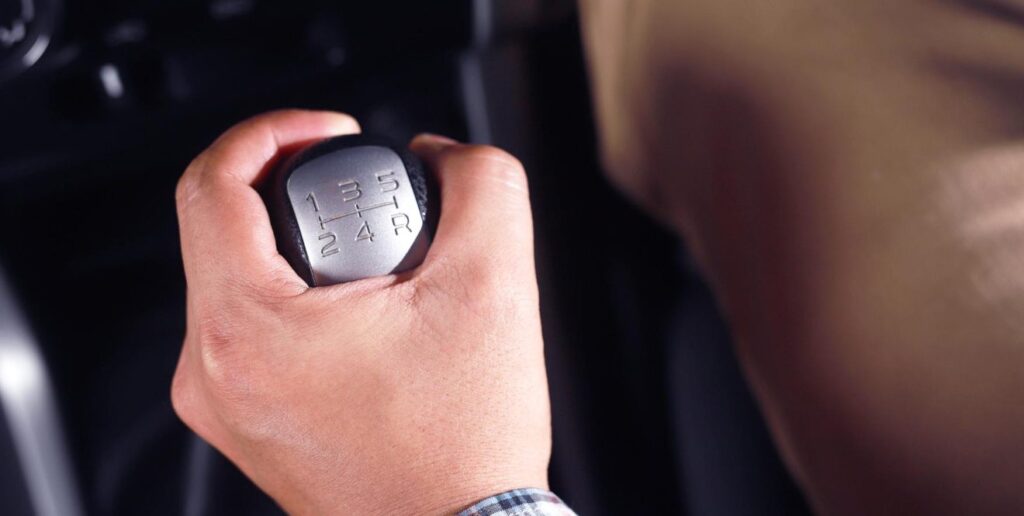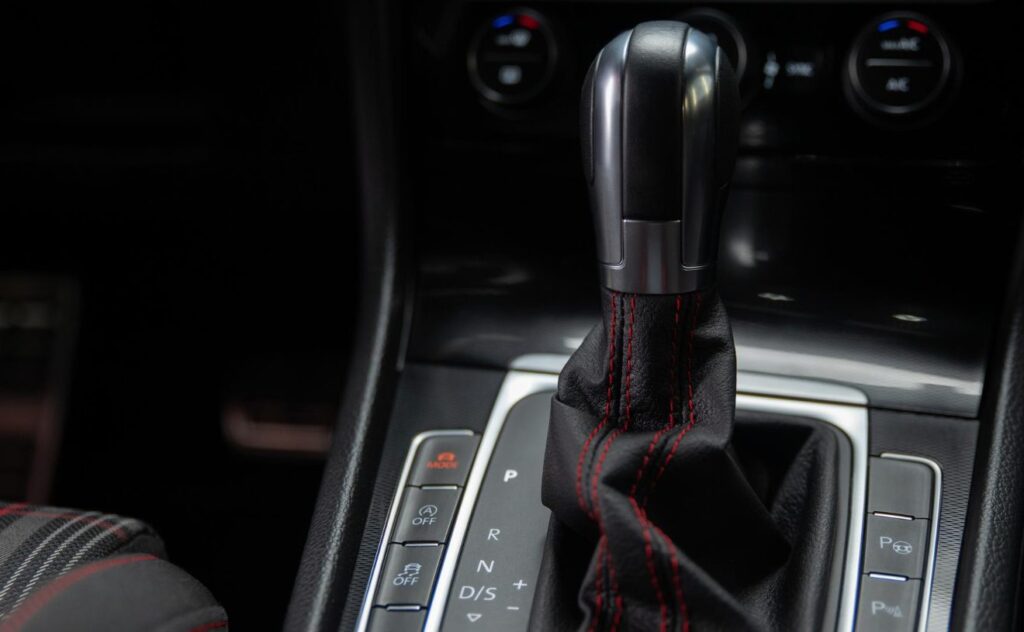
Introduction
Overview of Driving Transmission Types
When it comes to learning to drive, one of the first decisions you’ll face is whether to learn in a manual or automatic car.
The type of transmission a car has determines how the driver interacts with the vehicle, particularly in how they control the speed and gears.
Manual cars require the driver to change gears manually using a clutch pedal and gear stick. In contrast, automatic cars handle most gear changes themselves, allowing the driver to focus more on steering, accelerating, and braking.
Current Trends in Driving Lessons
The current trends in driving lessons reflect broader automotive industry shifts, including increased availability of automatic vehicles.
In urban areas, where driving can be more complex due to traffic congestion, many new drivers prefer automatic lessons for simplicity.
However, manual driving lessons remain popular, especially among drivers who seek more control over their vehicle or who may drive in varied conditions, such as in rural areas.
Importance of Choosing the Right Type of Lessons
Choosing the right type of driving lessons is crucial as it not only affects how you learn to drive but also your confidence on the road.
Your choice should be guided by several factors, including the type of vehicle you plan to drive in the future, your personal comfort with multitasking under pressure, and the typical driving conditions you expect to face.
Pros and Cons of Manual Driving Lessons
Benefits of Learning Manual
One of the main benefits of learning manual transmission is the level of control it offers. Being able to manually shift gears gives drivers precise control over the car’s power and speed in different driving scenarios such as overtaking or driving on icy roads.
Additionally, manual cars tend to be less expensive both to purchase and maintain. Learning to drive a manual car also means you’re licensed to drive both manual and automatic vehicles, which can be advantageous in situations where you might need to drive a vehicle with a manual gearbox.

Challenges of Manual Transmission
The challenges of manual transmission can be significant, especially for new drivers. The learning curve is steeper with a manual car.
New drivers must learn how to coordinate the clutch pedal with the gear stick and accelerator, a process that can be initially daunting and is prone to causing stalls and jerky movements.
In heavy traffic, driving a manual can be more tiring and stressful due to the constant need to shift gears.
How Manual Skills Impact Driving Versatility
Learning to drive a manual vehicle can significantly impact a driver’s versatility. Manual driving skills can enhance a driver’s adaptability, enabling them to drive a wider range of vehicles worldwide as many countries predominantly use manual vehicles.
Furthermore, these skills can improve a driver’s understanding of vehicle mechanics and behaviour under different conditions, making them more attuned and responsive drivers.
Pros of Manual Driving Lessons:
- Increased Control: Manual transmission provides more control over the car, allowing the driver to manage the vehicle’s power and speed more precisely, especially in challenging driving conditions.
- Cost-Effectiveness: Generally, manual cars are cheaper to buy and maintain compared to their automatic counterparts.
- Versatility: Learning on a manual transmission grants the ability to drive both manual and automatic vehicles, enhancing flexibility in driving options.
- Skill Development: Manual driving enhances understanding of vehicle mechanics and improves driving skills through active engagement in gear shifting and speed control.
Cons of Manual Driving Lessons:
- Steep Learning Curve: Mastering the coordination between the clutch, gears, and accelerator can be challenging and may lead to initial frustrations like stalling.
- Physically Demanding: In traffic-heavy environments, constant gear shifting can be tiring and may increase driver fatigue.
- Stressful for Beginners: The need for frequent gear changes and clutch control in busy or fast-moving traffic can be overwhelming for new drivers.
- Limited Availability: As the popularity of automatic cars increases, finding manual cars and instructors might become more challenging in certain regions.
Pros and Cons of Automatic Driving Lessons
Benefits of Learning Automatic
Learning to drive an automatic vehicle comes with significant advantages, particularly in terms of simplicity and focus.
Drivers of automatic cars can devote their full attention to monitoring the road, navigating traffic, and handling the vehicle, as they do not need to manually change gears.
This can make the overall driving experience less stressful, especially for beginners. Furthermore, automatic transmissions are ideal in heavy traffic conditions where constant gear shifting can be laborious and distracting in a manual vehicle.
The ease with which new drivers typically master automatic cars can also lead to a more confident approach to driving independently sooner.

Limitations of Automatic Transmission
However, automatic transmissions are not without their drawbacks. One major limitation is cost: automatic vehicles can be more expensive to purchase and maintain.
Repairs might also be costlier due to the complexity of automatic systems. Another consideration is that driving an automatic vehicle restricts a driver’s license to only automatic cars, unless they take a separate test in a manual vehicle. This could limit a driver’s flexibility in driving different types of vehicles.
Convenience and Ease of Learning
The convenience of learning to drive an automatic is undeniable. It allows the learner to concentrate on learning road rules and driving strategies without the added complexity of gear changes.
This often results in a quicker learning curve and a less intimidating introduction to driving.
For many, especially those who live in bustling urban environments with frequent stop-start traffic, learning on an automatic transmission offers a practical and appealing solution.
Pros of Automatic Driving Lessons:
- Simplicity: Automatic cars eliminate the need for manual gear changes and clutch control, simplifying the driving process.
- Reduced Learning Time: The absence of manual gears allows learners to focus on other aspects of driving, potentially reducing the time it takes to become proficient.
- Stress Reduction: In heavy traffic, automatics offer a more relaxed driving experience by handling gear changes, reducing driver fatigue and stress.
- Focus on Driving Techniques: Automatic transmissions allow the driver to concentrate more on their surroundings, road rules, and handling the vehicle.
Cons of Automatic Driving Lessons:
- Higher Cost: Automatic vehicles can be more expensive to buy and maintain compared to their manual counterparts.
- License Limitation: Passing a test in an automatic car restricts the driver’s license to only automatic vehicles unless they also pass a manual test.
- Less Control: Automatic drivers may experience less control over the vehicle as they cannot manually select gears to manage speed and power in various driving conditions.
Considerations for Choosing Between Manual and Automatic
Personal Preferences and Comfort Level
When choosing between manual and automatic, personal preference plays a significant role. Some drivers enjoy the engagement and control offered by a manual transmission, finding it more satisfying and fun.
Others may prioritise convenience and ease, especially if they have less confidence in their multitasking skills or if they simply prefer a more straightforward driving experience.
Assessing your comfort level with each type of transmission during a trial lesson can be very helpful in making this decision.
Future Vehicle Preferences
Your anticipated future vehicle choices should also influence your decision. If you plan to own or frequently rent cars in regions where manual transmissions are prevalent, or if budget constraints make manual vehicles a more likely option, learning to drive manual is advisable.
Conversely, if you foresee yourself driving modern or luxury vehicles, which increasingly feature automatic transmissions, learning to drive automatic might be the more practical choice.
Geographical and Traffic Considerations
Geographical and traffic conditions in your area can also dictate the more suitable transmission type.
In rural areas with open roads and less traffic, a manual transmission can offer more engaging and enjoyable driving.
However, in urban areas where traffic congestion is common, an automatic transmission can alleviate the stress of constant stopping and starting.
The landscape’s topography, such as hilly terrains, might also influence the choice, as automatic transmissions can provide a smoother ride on steep inclines.
Impact on Driving Test and Licensing
Differences in Driving Tests for Manual vs Automatic
When it comes to the driving test in the UK, the type of car you choose to take your test in will directly affect the type of licence you receive.
A test taken in a manual car will qualify you for a licence that allows you to drive both manual and automatic vehicles.
In contrast, a test taken in an automatic car restricts you to driving automatic vehicles only unless you pass a separate test in a manual vehicle later.
While the test standards are the same in terms of road safety and vehicle control, the manual driving test involves additional skills related to gear and clutch control.

Licensing Restrictions and Implications
The licensing restrictions are an important consideration. Opting for an automatic licence could limit your driving options in the future.
It’s important to consider whether you might need to drive a manual vehicle in the future, as obtaining a manual licence later will require additional time, effort, and expense.
On the other hand, an automatic licence might suffice if you prefer the convenience and plan to stick with automatic vehicles long term.
How Employers View Manual vs Automatic Skills
The preference between manual and automatic can also influence employment opportunities, particularly in driving-related jobs.
Some employers might value the versatility of drivers who are competent in both types of vehicles, especially in industries involving transportation or delivery services where manual vehicles are prevalent.
Having manual driving skills can sometimes be a deciding factor in hiring processes.
Long-Term Implications and Cost Considerations
Cost Differences in Lessons and Vehicle Maintenance
The cost of learning to drive can vary significantly between manual and automatic. Automatic driving lessons typically are more expensive per lesson compared to manual due to higher fuel consumption and vehicle maintenance costs.
However, you may require fewer lessons overall due to the reduced complexity of driving. As for vehicle maintenance, automatic cars can be more expensive to repair due to their complex transmission systems and higher initial vehicle cost.

Resale Value and Availability of Manual vs Automatic Cars
When considering the purchase of a car, the resale value and availability can influence your decision between manual and automatic.
Traditionally, manual cars have been more common in the UK, thus easier to sell and cheaper to buy.
However, the increasing popularity of automatic vehicles, especially in urban areas, could mean better future availability and resale value for automatics as market preferences continue to shift.
Future-Proofing Your Driving Skills
Future-proofing your driving skills involves considering how technological advancements in vehicles might influence the relevance of manual vs automatic driving skills.
With the rise of electric vehicles, which are predominantly automatic, learning to drive an automatic could be more advantageous in the long run.
However, possessing the skills to drive both types of transmissions ensures that you are well-prepared for a variety of driving situations and vehicle types, maintaining your adaptability as a driver in a rapidly evolving automotive landscape.
Considering these factors will help you make a well-informed decision about whether to take manual or automatic driving lessons, balancing immediate needs with long-term considerations in your driving career and personal life.
Frequently asked questions
A manual driving licence allows you to operate both manual and automatic vehicles, while an automatic licence restricts you to driving automatic vehicles only unless you pass an additional test for manual vehicles.
Yes, automatic driving lessons are typically more expensive than manual ones. This is due to the higher cost of automatic vehicles themselves, their maintenance, and potentially higher fuel consumption.
Yes, you can switch from automatic to manual lessons at any point. However, you will need to adjust to the added complexity of handling a manual transmission and may need additional lessons to master the skill.
Some employers, especially those in industries like transportation or delivery services, may prefer employees who can drive both types of vehicles. Manual driving skills can be particularly valued for their versatility.
Many learners find it easier to pass the driving test in an automatic car because they can focus more on road safety and handling the vehicle without worrying about gear changes.
Consider your personal comfort and confidence with multitasking, potential future vehicle preferences, geographical and traffic conditions, and whether you may need manual skills for future employment.
Typically, learning to drive a manual car can take longer than learning to drive an automatic because of the additional skills involved, such as clutch control and mastering gear changes.
While manual cars may be cheaper to buy and maintain, and lessons might be less expensive, automatic cars can be less stressful to drive and maintain their value better as demand increases, especially in urban areas.
The advantages include greater control over the vehicle, potentially lower vehicle and maintenance costs, and the flexibility to drive both manual and automatic vehicles.
With the increasing popularity of electric vehicles, which are primarily automatic, learning to drive an automatic might be more beneficial in the future. However, having manual driving skills ensures broader versatility across different types of vehicles and situations.


